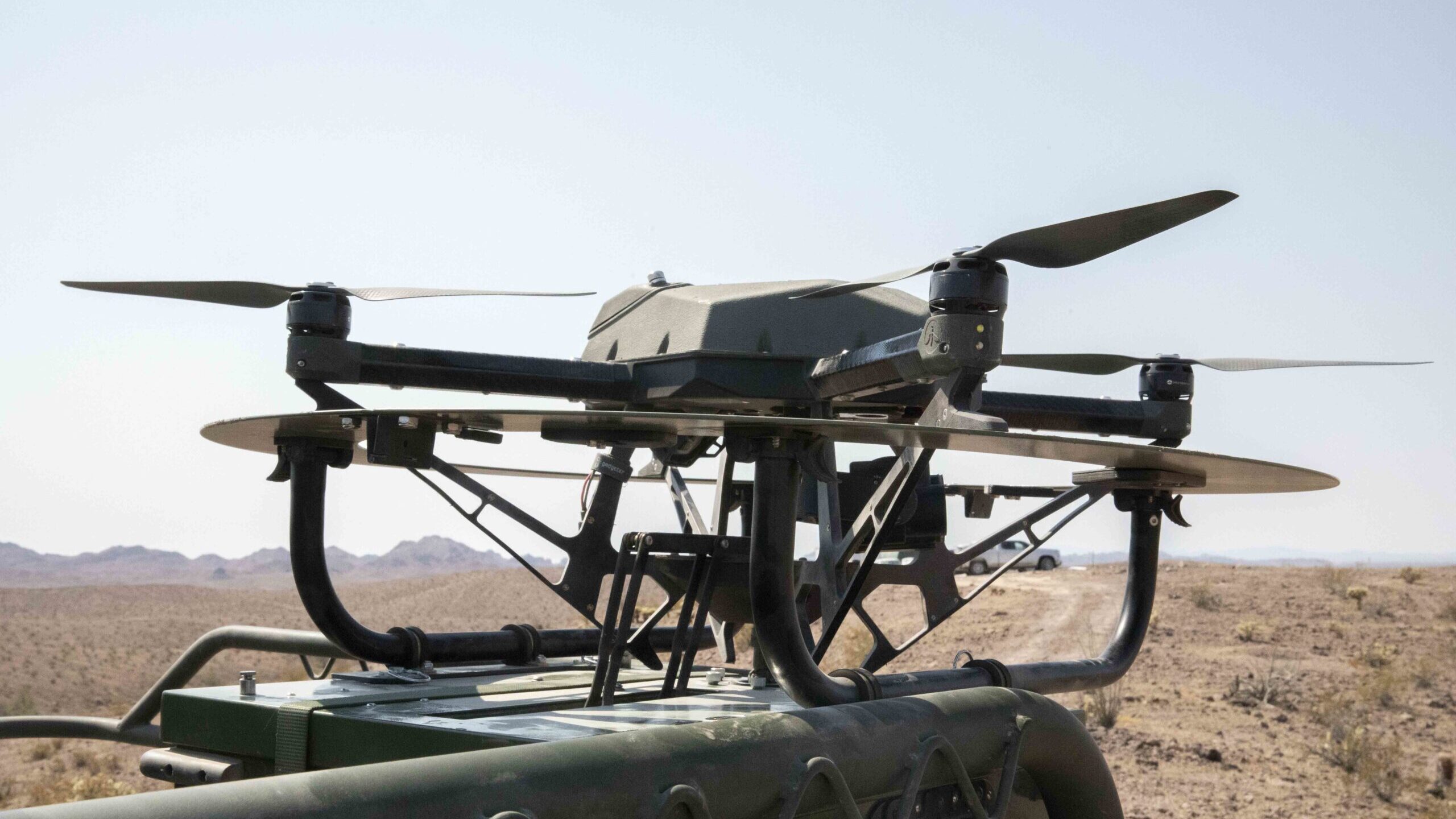
The autonomous system, Origin, prepares for a practice run during the Project Convergence capstone event at Yuma Proving Ground, Arizona, Aug. 11 – Sept. 18, 2020. (U.S. Army photo by Spc. Carlos Cuebas Fantauzzi, 22nd Mobile Public Affairs Detachment)
AUSA: As the Army puts scores of cutting-edge technologies and capabilities through the ringer at its Project Convergence experiment the deserts of Arizona over the next four weeks, top Army officials are watching closely to see what survives and to get it into the hands of soldiers “as quickly as possible.”
“If it works, we’re going to transition quickly,” Lt. Gen. James Richardson, deputy commander of Army Futures Command and Project Convergence director, told the Association of the United States Army (AUSA) conference. To do so, Richardson said the Army has greased the acquisition wheels in order to bridge the “valley of death,” where many a promising project has met its end.
Among the steps taken, before the Project Convergence started in Arizona started this week, Richardson said the Army ensured that advanced capabilities tested at the experiment were already connected with programs of record at acquisition offices across the service, paving a direct transition path.
“That’s a little bit different way we’ve done in the past, but what to avoid is is this valley of death,” Richardson said.
Project Convergence is the Army’s annual weeks-long exercise beginning outside Yuma, Ariz., where it links future technologies to test interoperability and prepare for multi-domain operations. This year, Convergence is going inter-service, bringing in the Air Force, Navy and Marines to connect disparate systems and help inform the Pentagon’s Joint Warfighting Concept.
RELATED: Project Convergence 2021 Kicks Off, Showcases 110 New Technologies
The service is testing seven different use cases this year and is centered on soldiers from the 82nd Airborne Division and the Multi-Domain Task Force, Richardson said. The more than 100 technologies that the Army is bringing to Project Convergence 21 will also be tested in denied and degraded environments — conditions in which Army expects to have to fight in the future.
“What Project Convergence has done is it has allowed everyone to have a warfighter establish an operational scenario, in this case, from a joint perspective, to take this technology and link it to the network to basically conduct this tactical scenario,” Richardson said.






















